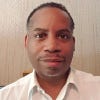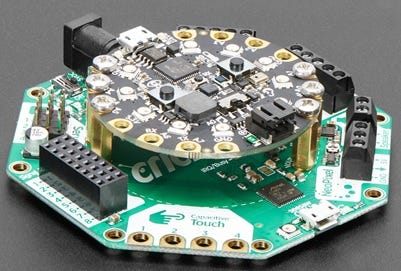Low Cost DIY Robotics Platform Allows Mechatronics Development
The intent behind the integration of technologies that make up mechatronics is to improve a mechanical unit’s operation and performance through system monitoring and feedback control.
January 23, 2019

Mechatronics is an interdisciplinary field consisting of electrical-electronics, electromechanical. mechanical systems, and embedded software. The intent behind this interdisciplinary integration of technologies is to improve a mechanical unit’s operation and performance through system monitoring and feedback control. The electronics and embedded software provide the system monitoring and feedback control features for the target mechatronics unit.
Entry into exploring mechatronics can be cost prohibitive when purchasing a development board and systems accessories. Also, inventories of such development platforms may be low or discontinued from the manufacturer or associated distributor. To resolve these design obstacles a low cost off the shelf robotics board can easily be used as an effective mechatronics development platform. Proof of Concepts (PoCs) in Human Machine Interfacing (HMI), predictive analytics, motor drive, feedback monitoring-control, and physical stimuli sensory detection can be rapidly developed using this effective low-cost development platform.
|
Mechatronics improves an electromechanical and mechanical systems performance using an interdisciplinary approach. (Source: ATE Mechatronics Community Exchange) |
What is a Crickit?
Crickit is a Creative Interactive Construction Kit developed by founder of Adafruit Industries Limor Fried for the rapid development of robotics. The Crickit allows engineers, students, and makers the ability to build and test robots using materials like paper, wood, plastics, and metals. The circular printed circuit board(PCB) (3.20in/81.28mm diameter) is populated with a variety of overvoltage protection, inter-integrated circuit (I2C) communications port and high current motor and electromechanical driver circuits. Also, a 32bit Microchip ATSAMD09D14A microcontroller provides the co-processor power for managing the circuit peripherals populated on the PCB. With the Crickit, mechatronics PoCs can be cost effectively designed, tested and evaluated. Terminal screw-blocks and a triple in-line female header connector is provided for accessing circuit peripherals with external electronic sensors and electromechanical components. Solenoids, relays, and high-power LEDs can be driven easily with the Crickit.
|
The Crickit developed by Adafruit Industries provides an effective low-cost entry into mechatronics. (Source:Adafruit Industries) |
Extension Boards
In addition, the Crickit controls can be enhanced using microcontroller boards such as the Raspberry Pi, the Feather, micro:bit, and the Circuit Playground Express. For mounting each microcontroller platform to the Crickit, the specific PCB has either an edge, dual inline, or copper plated through holes for attachment. The extension boards communicate using a “seesaw” I2C communication scheme and provide additional sensory devices and visual displays for enhancing the mechatronics user experience (UX). The “seesaw” communication method is accomplished using the Crickit’s onboard ATSAMD09D14A 32bit microcontroller. Also, firmware updates can be accomplished using the seesaw USB port as well.
|
The Crickit mechatronics UX can be enhanced using extension boards like the Circuit Playground Express. (Source: Adafruit Industries) |
Input/Output Peripherals and Driver Circuits
To improve the specific electromechanical or mechanical system for performance enhancement, the Crickit is populated with Input/Ouput (I/O) and driver circuits. The following I/O and Driver Circuit peripherals are featured on the Crickit platform.
A set of 4 x analog or digital servo control (16bit precision timer included)
One 2 x bi-directional brushed DC motor, 1A (ampere) current limited drivers.
An 8bit pulse-width modulated (PWM) driver for stepper motor operation.
One 4 x high current Darlington driver circuit capable of source 500mA from each output channel. The driver circuit is capable of driving solenoids, electromechanical relays, large high bright LEDs or uni-polar steppe motors.
One 4x Capacitive touch sensing pads
One 8 x signal pins for analog sensing or digital switched inputs. The signal pins are +3.3 V compliant.
One Neopixel driver circuit. The driver is a 5V level shift compliant circuit.
One Class D amplifier. The Class D amplifier can drive a 4 -8ohm speaker with 3Watts (W) of amplification.
The voltage supply limitation of operating the servo, brushed dc and stepper motors is +5VDC. The Crickit provides overvoltage limiting to +5V using a Texas Instruments (TI) TPS2595 e-fuse management chip.
Software
To add enhancement features and functions to the target mechatronics PoC, a variety of programming languages can be used with the Cricket. Google’s Blockly code removes the software overhead complexities of high textual language programming from makers and students. With blockly code, the application of the mechatronics PoC can be the focus instead of software development. As a learning platform, other software languages can be learned on the Cricket. Javascript is the default scripting language of the Crickit.
The mechatronics platform can be programmed using CircuitPython; an embedded programming language for microcontrollers. The traditional C/C++ language used for the Arduino is attainable for the Crickit using its Integrated Development Environment (IDE). Another programming IDE that’s popular with coding in the Python language is the open platform Mu.
|
The Crickit mechatronics-based DC Motor Control with code (Blockly and Javascript. (Source: Don Wilcher) |
The Cricket allows exploration into the mechatronics field with an easy to use and cost- effective development platform. Additional resources for the Crickit can be attained from the Adafruit website.
Don Wilcher is a passionate teacher of electronics technology and an electrical engineer with 26 years of industrial experience. He’s worked on industrial robotics systems, automotive electronic modules/systems, and embedded wireless controls for small consumer appliances. He’s also a book author, writing DIY project books on electronics and robotics technologies.
|
About the Author(s)
You May Also Like







.jpg?width=300&auto=webp&quality=80&disable=upscale)


